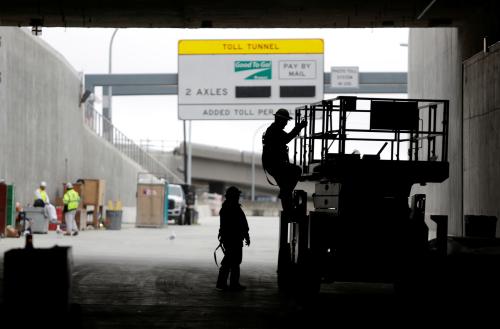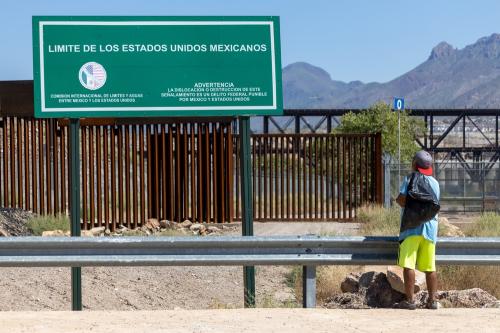Let’s connect some dots. There is an unprecedented shortage of labor in the United States. In some cities, such as Lincoln (NE), Huntsville (AL), and Omaha-Council Bluffs (NE-IA), the number of job openings is three times the number of unemployed workers, according to this measure by Brookings’ Workforce of the Future. Among other factors (such as supply chain disruptions or demand outpacing supply in the economy), this labor shortage and the subsequent rise in wages are likely a partial explanation for the rise in inflation. It is important to note that this is a two-way street, of course, because wages also go up in response to inflation, which is the dangerous, vicious inflationary cycle that we better avoid.
At the same time, 2021 resulted in the highest recorded numbers of migrants entering or attempting to enter through the southern border to the United States. There is no reason to think this won’t continue in 2022. These migrants, mostly from the Northern Triangle countries (Guatemala, Honduras, and El Salvador), are desperate to join the U.S. labor force, as they flee poor economic conditions—particularly after the economic slowdown caused by the global COVID-19 pandemic—as well as violence and instability in general. In response to this flow, the Biden-Harris administration has focused on significantly increasing investment toward Central America, including Mexico, while at the same time telling immigrants in Guatemala “do not come.”
The irony is clear; if there was any time in the modern history of the United States to promote a flexibilization of its migration policies, it is now. It is the most efficient and easiest way to offer a smart solution to the unprecedented tightness in U.S. labor markets. It is a no-brainer for several reasons.
First, many of the occupations that are particularly experiencing shortages are occupations where immigrants can start jobs quickly. For instance, part of what exacerbates the supply chain problems is the need for tens of thousands of port workers and truck drivers. Other industries where there are important shortages, such as restaurants and construction, which traditionally have been partly fulfilled by immigrants, could also find new employees if these immigrants are allowed to find legal pathways to live and work in the United States.
Second, these workers will not “substitute” American workers, evidenced clearly by the worker shortages. In addition to this, decades of research by economists shows us that immigrants do not worsen labor outcomes of natives. In fact, immigrants are likely complements to American workers, which would come in handy, especially now.
Third, there is a big infrastructure package on the way to invest in capital, assuaging traditional, antiquated concerns that the asymmetry of labor demand and supply will hurt wages. Let’s unpack that a little bit. The main argument people often use to say that immigrants negatively affect labor outcomes of natives is a theoretical one, using the simplest framework of labor demand and labor supply. If labor supply increases and labor demand stays the same (which is a big assumption because new workers also consume and therefore create demand), you would see a reduction in wages. But that also assumes that the capital stock in the economy will remain the same so that essentially, in theory, a higher flow of immigrants would reduce the capital-per-worker ratio, putting downward pressure on wages. This basically assumes that no capital investment occurs. This thinking is wrong. Investment is happening. Biden’s $1.2 trillion dollars infrastructure plan is doing exactly that: investing in capital and raising the levels of capital per worker in the economy. Therefore, as I argued before, this is the right moment to increase the labor supply of the U.S. by providing legal pathways to immigrants as well as providing a path to citizenship for millions of undocumented immigrants.
Immigrants have always been an engine of economic prosperity for the American economy. With all the challenges ahead, this is true now more than ever.






Commentary
President Biden, tear down those walls and let immigrants take jobs in high demand
February 24, 2022